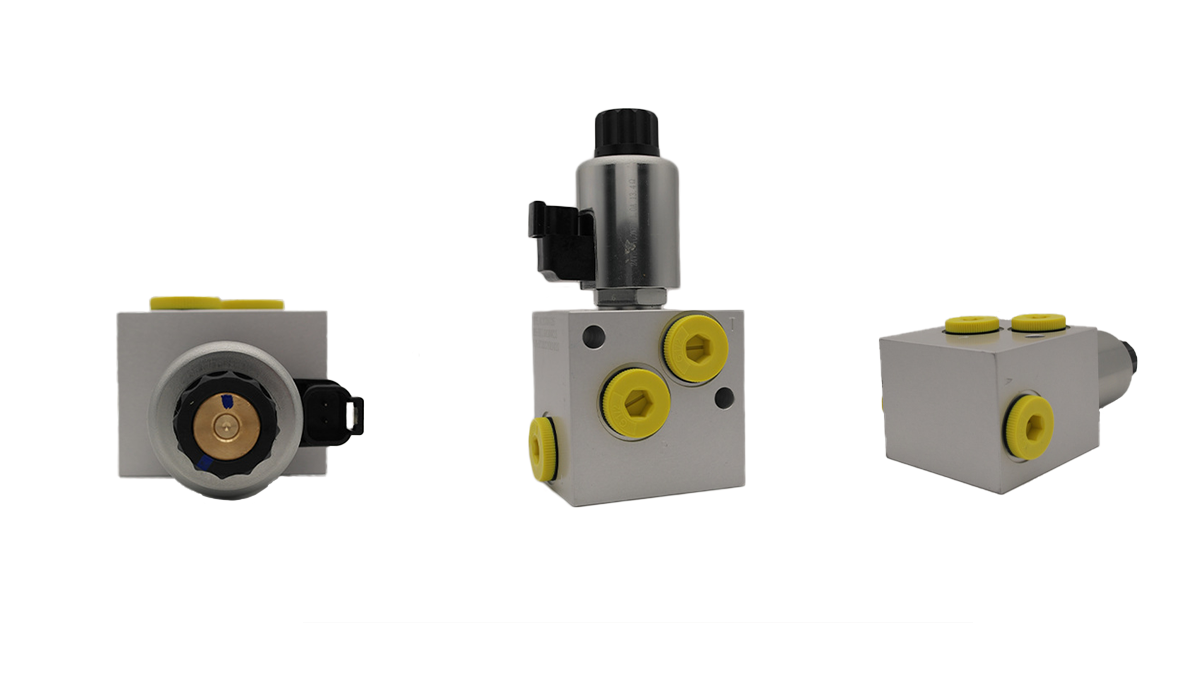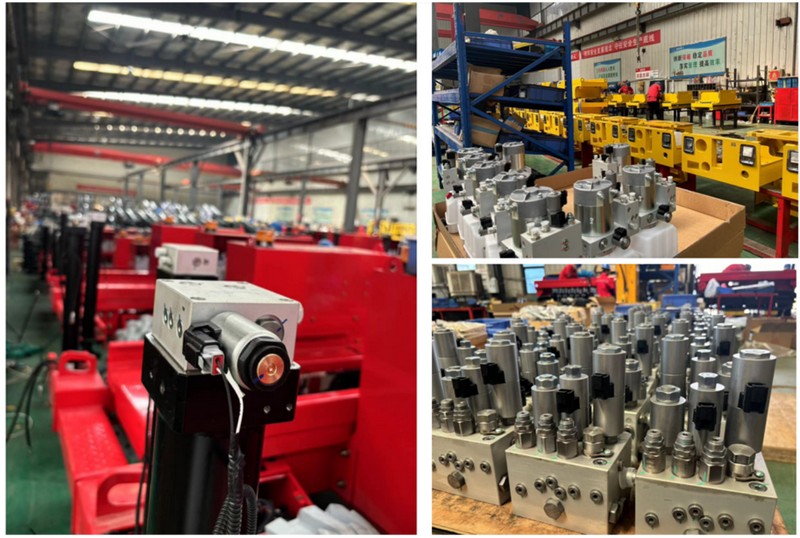Pressure Reducing Hydraulic Valve
1 Safety: The pressure reducing valve can monitor and adjust the pressure in real time to ensure that the pressure in the system is always maintained within a preset safe range, and effectively prevent equipment damage or personnel injury caused by sudden pressure increase.
2 Economy: By precisely controlling the pressure, unnecessary high-pressure operation is avoided, thereby saving energy costs.It can prevent equipment damage caused by excessive pressure, and therefore reduce the cost of repairing and replacing parts. 1
3 Energy-saving effect: reducing water pressure can reduce water waste and achieve energy-saving effect.
Extend the service life of the pipeline: reducing the pressure of the pipeline can extend the service life of the pipeline, reduce user troubles and reduce capital and manpower investment
4 Easy to adjust: the pressure reducing valve has a wide pressure regulating range, and the output pressure can be precisely adjusted as needed to maintain a stable output pressure.
Pressure reducing hydraulic valve
It controls the flow of liquids and is widely used in aviation, chemical industry, shipbuilding, machining and other fields.Its main function is to achieve precise control of liquid flow, direction, pressure and other parameters.The hydraulic control valve can control and adjust the flow rate, pressure and other parameters of the hydraulic system according to different functional requirements, and can cut off the fluid and change the flow direction.
The principle is mainly to change the channel of liquid flow through the movement of the valve core, so as to control the flow rate, pressure and flow direction of the liquid.The position of the valve core determines the flow direction of the fluid and the size of the liquid flow through the valve core channel.Under different working pressures, the hydraulic control valve can adjust the position of the spool to achieve accurate control of liquid flow and pressure.

Detailed parameters
| Maximum inlet pressure | decompression pressure | Maximum flow | Oil temperature range | Protection level | Proportional valve supply voltage | Electrical connection form | Response time at 100% input signal |
| 50Bar; maximum | 30Bar | 40LPM | -20~80℃ | IP67 according to EN60529 | 24V maximum current: 1A Rated resistance at 20℃: 13.4±6.5%Ω | DT04-2P | <50ms |
Pressure reducing valve is a kind of equipment used to reduce fluid pressure, which is widely used in various industrial fields, such as hydraulic systems, water treatment, gas pipelines, etc.The technical parameters of the pressure reducing valve are the key factors to be considered when choosing and using the pressure reducing valve, including nominal pressure, shell test pressure, sealing test pressure, maximum inlet pressure, outlet pressure range, flow characteristics, etc.
Nominal pressure: Refers to the maximum pressure of the valve at room temperature, usually expressed in MPa (MPa).Different types of pressure reducing valves have different nominal pressure levels, such as 1.0MPa, 1.6MPa, 2.5MPa, etc.
Shell test pressure and sealing test pressure: These two parameters are used to test the sealing performance and durability of the valve.The shell test pressure is the maximum allowable pressure of the valve when it is under internal pressure, while the sealing test pressure is the pressure required to ensure the sealing performance of the valve.
Maximum inlet pressure: Refers to the maximum fluid inlet pressure allowed by the pressure reducing valve. Exceeding this pressure may damage the valve or affect its normal operation.
Outlet pressure range: The main function of the pressure reducing valve is to adjust the pressure of the fluid from the inlet to the outlet. The outlet pressure range is set according to the specific application needs and can usually be adjusted within a certain range.
Flow characteristics: The flow characteristics of the pressure reducing valve determine its flow adjustment ability under different pressures, which is essential to ensure the stable operation of the system.
In addition, the design standards, materials, and connection methods of pressure reducing valves are also factors that need to be considered when choosing.For example, some pressure reducing valves may meet JB, GB, ANSI and other design standards, materials may include stainless steel, cast steel, etc., and connection methods may have threaded connections, flange connections and other forms.
Through adjustment, the inlet pressure is reduced to a certain required outlet pressure, and the outlet pressure is automatically maintained stable by relying on the energy of the medium itself.From the point of view of fluid mechanics, the pressure reducing valve is a throttling element whose local resistance can be changed, that is, by changing the throttling area, the flow rate and the kinetic energy of the fluid are changed, resulting in different pressure losses, so as to achieve the purpose of decompression.Then rely on the adjustment of the control and adjustment system to balance the fluctuation of the pressure behind the valve with the spring force, so that the pressure behind the valve remains constant within a certain error range.The types of pressure reducing valves include membrane type, inner spring piston type, etc., and the standard is JB/T2203-1999.Pressure reducing valves are widely used in life, fire protection and other industrial fluid control systems.
The working principle of the steam pressure reducing valve is similar to that of an ordinary pressure reducing valve, but it is specially designed for the steam medium.When the inlet pressure rises instantly, the output pressure also rises, causing the pressure in the diaphragm gas chamber 6 to increase, destroying the original force balance, causing the diaphragm to move upward.At the same time, the action of the return spring moves the intake valve core upward, closes the intake valve port, and the throttling effect increases, causing the output pressure to drop until a new balance is reached.Conversely, when the inlet pressure drops instantly, the output pressure also drops, the diaphragm moves down, the intake valve port is opened, and the throttling effect is reduced, so that the output pressure basically returns to its original value.
Product scenario application


Product Line:
The production line for Customised Hydraulic Valve Blocks is characterised by precise craftsmanship and efficient processes, ensuring that each block is perfectly tailored to the customer's individual requirements. The production line begins with the initial design, which is planned in detail by engineers according to the customer's requirements, followed by material processing and precision manufacturing on high-precision machinery and equipment. After a rigorous assembly and testing process, each valve block is strictly inspected to ensure its performance and durability.

Warehouse:
The facility for producing Customized Hydraulic Valve Blocks is a state-of-the-art manufacturing plant designed for precision and efficiency. The plant features advanced CNC machining centers that ensure high accuracy in cutting, drilling, and milling. Dedicated design and engineering teams work closely to tailor each valve block to meet specific client requirements. The production process includes rigorous assembly and testing stations, where each valve block undergoes thorough quality checks to ensure optimal performance and reliability. The facility also incorporates modern surface treatment and packaging areas, ensuring that the final products are well-protected and ready for prompt delivery to clients.

Packing&transportation:
The packaging for Customized Hydraulic Valve Blocks is meticulously designed to ensure safe and secure transport. Each valve block is carefully wrapped in protective materials, such as foam or bubble wrap, to guard against potential damage during shipping. The blocks are then placed in custom-sized, reinforced boxes that provide additional cushioning and support. Each package is clearly labeled with handling instructions and product information to facilitate smooth logistics and tracking. This comprehensive packaging approach ensures that the valve blocks arrive at their destination in excellent condition, ready for installation and use.

Related News
Submitted successfully
We will contact you as soon as possible










